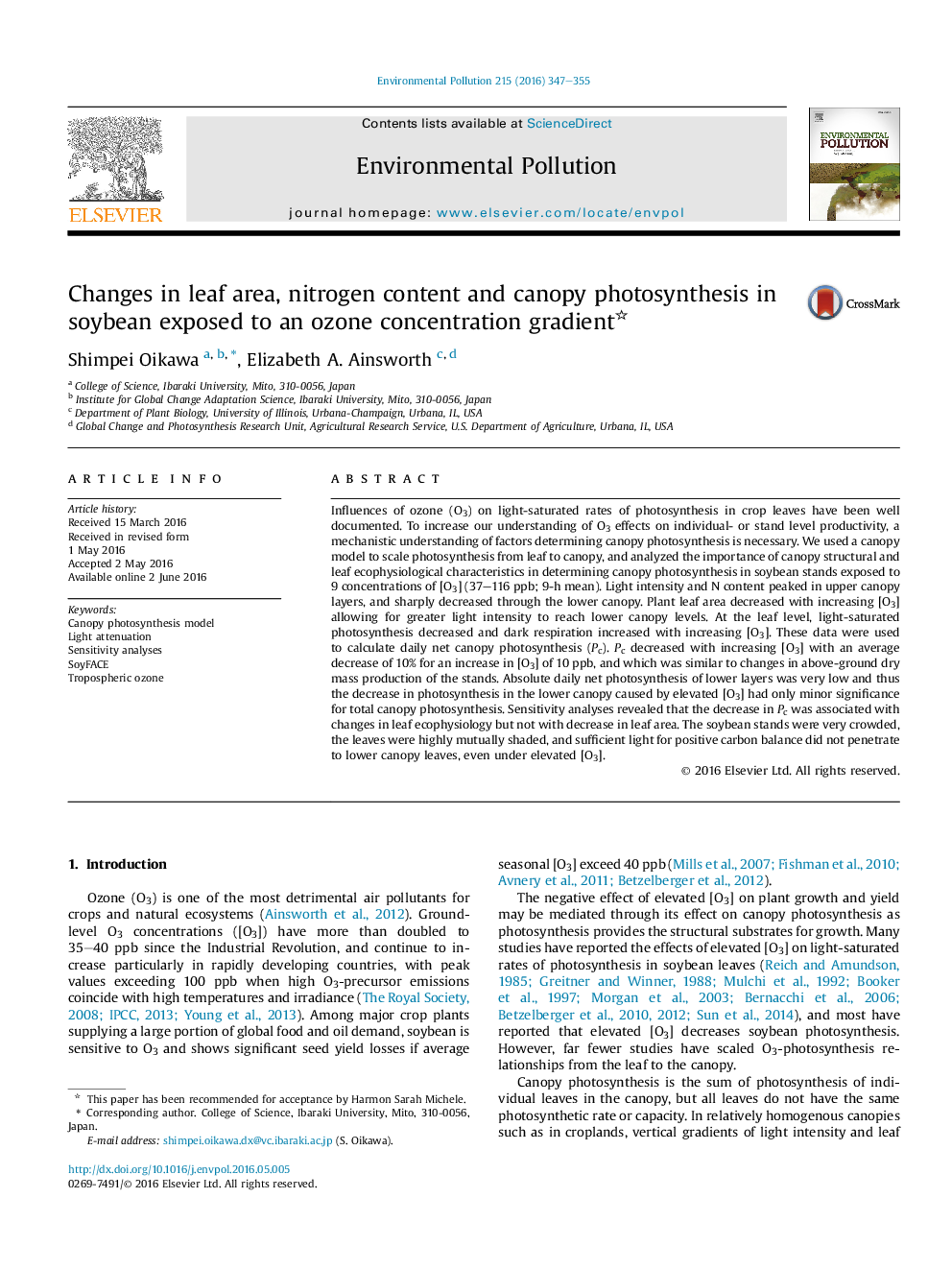| Article ID | Journal | Published Year | Pages | File Type |
|---|---|---|---|---|
| 6316115 | Environmental Pollution | 2016 | 9 Pages |
â¢Daily net canopy photosynthesis of soybean decreases linearly with increasing [O3].â¢[O3] damage to daily net photosynthesis is much greater in upper than lower layers.â¢Elevated [O3] increases light penetration to lower canopy leaves.â¢Leaf area is not a limiting factor for canopy photosynthesis at elevated [O3].
Influences of ozone (O3) on light-saturated rates of photosynthesis in crop leaves have been well documented. To increase our understanding of O3 effects on individual- or stand level productivity, a mechanistic understanding of factors determining canopy photosynthesis is necessary. We used a canopy model to scale photosynthesis from leaf to canopy, and analyzed the importance of canopy structural and leaf ecophysiological characteristics in determining canopy photosynthesis in soybean stands exposed to 9 concentrations of [O3] (37-116Â ppb; 9-h mean). Light intensity and N content peaked in upper canopy layers, and sharply decreased through the lower canopy. Plant leaf area decreased with increasing [O3] allowing for greater light intensity to reach lower canopy levels. At the leaf level, light-saturated photosynthesis decreased and dark respiration increased with increasing [O3]. These data were used to calculate daily net canopy photosynthesis (Pc). Pc decreased with increasing [O3] with an average decrease of 10% for an increase in [O3] of 10Â ppb, and which was similar to changes in above-ground dry mass production of the stands. Absolute daily net photosynthesis of lower layers was very low and thus the decrease in photosynthesis in the lower canopy caused by elevated [O3] had only minor significance for total canopy photosynthesis. Sensitivity analyses revealed that the decrease in Pc was associated with changes in leaf ecophysiology but not with decrease in leaf area. The soybean stands were very crowded, the leaves were highly mutually shaded, and sufficient light for positive carbon balance did not penetrate to lower canopy leaves, even under elevated [O3].
Graphical abstractDownload high-res image (623KB)Download full-size image
